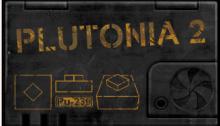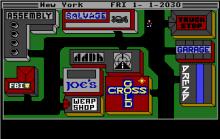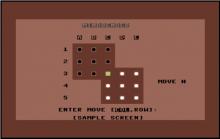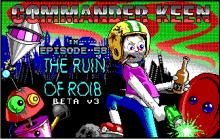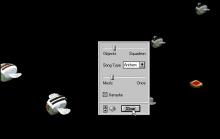The Elder Scrolls II: Daggerfall
Press Keyboard right side: Alt+Enter keys to switch to full screen game play, and Alt+Enter keys to return.
How to play The Elder Scrolls II: Daggerfall
Each game uses different controls, most DOS games use the keyboard arrows. Some will use the mouse.
The Elder Scrolls II: Daggerfall Description
In Daggerfall, as in all The Elder Scrolls games, players are not required to follow questlines or fill specific character archetypes.
Daggerfall features a spell-creation system where, through the Mages Guild, players can create custom spells with several different effects. The game will then automatically generate the mana cost of the spell based on the power of the effects chosen.
Other features include an equipment enchantment system (similar in concept to the spell creation system); the ability to buy houses and ships; a variety of clothing and equipment; dynamic political relationships between kingdoms; the ability to become a vampire, werewolf, or wereboar; and the combat system, which uses mouse movement to determine the direction and effect of weapon swings in melee combat.
The political system is supported by a net of guilds, orders, and religions, all with unique tasks and quests. Joining and contributing to these organizations allow the player to raise ranks and gain a reputation in the game world, which affects how NPCs and other factions view the player.
Daggerfall has genre-typical gore elements and some sexual topics. It displays cartoonish nudity (showing breasts and pubic hair on female paper dolls and penises and scrotum on male paper dolls) when all equipment is removed. It also features exposed breasts on some female NPCs.The game installer includes a password-protected childgard feature that hides blood and corpses (instead showing just the skeleton of the corpse), disables sexual topics (though not removing all nudity), and ensures the character portrait is wearing underwear at all times.
Daggerfall, like the other games in The Elder Scrolls series, takes place on the fictional continent of Tamriel. In Daggerfall, the player may travel within the High Rock and Hammerfell provinces of Tamriel. A wide range of formidable enemies, the strongest of which are the demonic Daedra, make the journey through these realms difficult.
Bethesda claims that the scale of the game is the size of Great Britain: around 229,848 square kilometers/ 88,745 sq miles. The game world features over 15,000 towns, cities, villages, and dungeons for the player's character to explore. According to Todd Howard, game director and executive producer for Bethesda, the game's sequel, The Elder Scrolls III: Morrowind, is 0.01% the size of Daggerfall, but most of Daggerfall 's terrain was randomly generated. Vvardenfell, the explorable part of Morrowind in the third game has 10 square miles (25.9 square kilometers). The Elder Scrolls IV: Oblivion has approximately 16 square miles (41.4 square kilometers) to explore.In Daggerfall, there are 750,000+ non-player characters (NPCs) for the player to interact with, compared to the count of around 1,000 NPCs found in Morrowind and Oblivion. However, the geography and the characters in these later games are much more detailed.
An automap was implemented to help players navigate through the lengthy tombs and ancient underground fortresses. Players have to visit approximately 6-8 areas in order to finish the game, although a total of 47 areas are present. A limited array of building blocks were used to construct the towns and dungeons, causing some reviewers to complain about the game's monotony. In 2002, Morrowind, the third game in the series, responded to this issue with a smaller, more detailed world containing unique-looking cities and NPCs with greater individuality.

The Elder Scrolls II: Daggerfall - additional information







